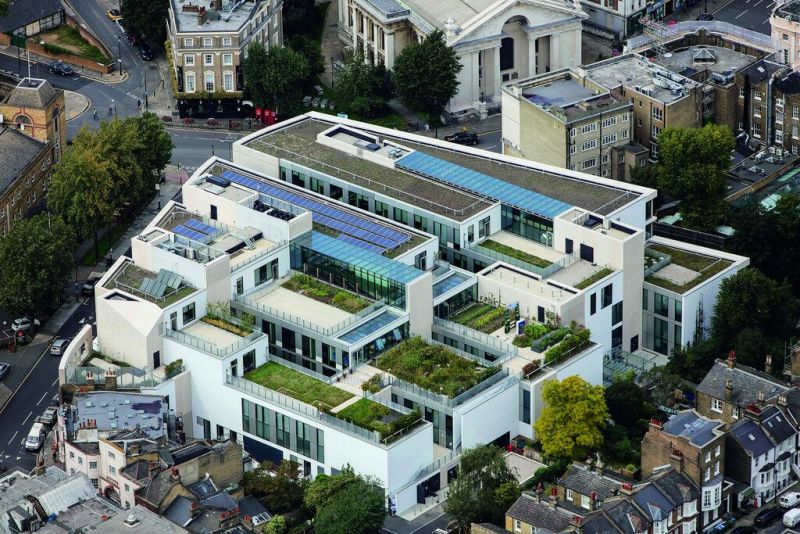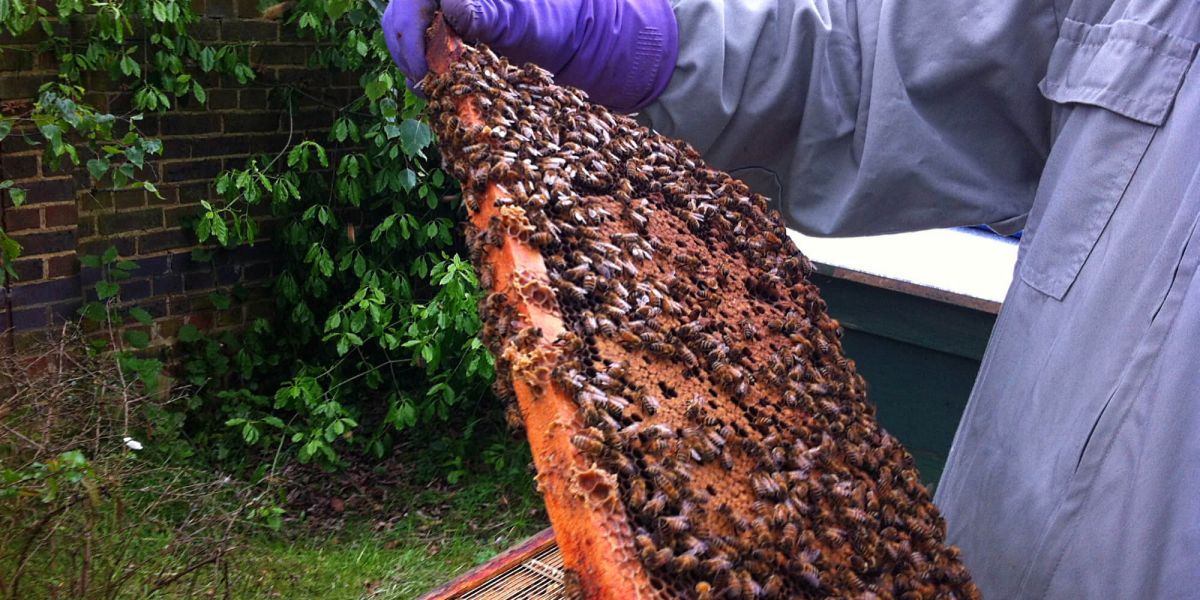Spending time outside, particularly in nature, can help to regulate stress, boost mental health and improve immune function. Did you know that even spending 15 minutes outside a day can boost your mood, concentration and physical health?
Sometimes however, it can be hard to know where to find nature. Many of us do not have a garden, and those of us who live in cities or towns may not live near a park or green space. But, even if it is hidden away, there will be some natural areas that would be available to you. Here at Greenwich, did you know that we have 6.7 hectares (9 football pitches in size) of natural land across our campuses. It is all publicly available, and we encourage all our students, staff and visitors to walk through it.
Nature is our biggest ally and our greatest inspiration
Sir David Attenborough
6.7 hectares (9 football pitches) of natural land
What is Biodiversity?
Biodiversity refers to all the variety of life that can be found on Earth (plants, animals, fungi and micro-organisms) in addition to the diverse communities that they form and habitats in which they live. The greater diversity of species the better an ecosystem can function, and the stronger it will be to change. No matter how small, all organisms have a part to play. Recent declines in biodiversity are largely attributable to man-made causes and being aware of these issues we can all help prevent further loss.
What are Ecosystem Services?
Ecosystem Services are the benefits provided by ecosystems that contribute to human survival and enhance our wellbeing. They can be direct, indirect and can be spilt into four categories:
- provision
- regulation
- supporting
- cultural
They could help reduce summer solar and heat gain through tree planting, reduce run off and flooding, provide spaces to improve wellbeing and reduce particulate pollution. Financial benefits can be calculated. Natural Capital research on woodlands, on behalf of DEFRA concluded that per year; recreational value accounted for £1.7billion, CO2 sequestration for both deciduous and coniferous trees totalled £813million, biomass for timber totalled £174million.
Our Plans
- Our Ecosystems Services Policy sets out our vision for achieving a balance between natural conservation, education and wellbeing enjoyment.
- Our Biodiversity Action Plan (BAP) 2020-2025 explains how our policy will be transformed into reality. We aim to show how correct management can bring both human and biological improvement.
Protecting our natural landscape and improving the benefits gained is down to an individual and collective effort. We would like to thank all those who have gone an extra mile to ensure our natural landscapes are well managed and looked after. Split into four areas (below), our objectives consider the wider ecosystem services when assessing organisational impact and opportunity.
| Habitats & Species | HO1 - To maintain & enhance the biological diversity of campus natural land HO2 - To balance the conservation opportunity with amenity needs |
|---|---|
| Setting up the Greenwich Monitoring Scheme | MO1 - To develop a system of monitoring the success |
| Student, Employee & External Engagement | EO1 - To integrate biodiversity into University life (students & staff) EO2 - To maintain areas of natural land for educational purposes EO3 - To provide suitable training to associated grounds & estates staff |
| Accounting for Biodiversity in Developments | NO1 - To integrate biodiversity net gain across our capital projects |
The plans and policy are agreed through the university’s Sustainable Management Committee (SMC). We encourage all staff and students to explore the biodiversity of the estate, and where possible seek to incorporate what can be learned from it within teaching and learning in addition to enjoying the beauty it provides.
Exploring Our Campuses
What will you find whilst exploring? Let us know what wildlife you see and you will be helping us monitor the success of our plans. Will you see the first hedgehog, or the return of newts? Record your sightings here; register, search for your campus under ‘activity’ and submit your sightings.
Avery Hill
- has over 13 acres (7 football pitches) of natural land.
- includes a community edible garden, ponds, woodland and wildflower meadows.
- a variety of habitat homes have been placed, from birds and bats to insects and hedgehogs.
- over 35 wildlife species identified, with 7 listed as 'Red' or 'Vulnerable'.
- 2 beehives on site, each managed by a qualified local beekeeper.
- explore the natural environment, follow the Avery Hill Sustainability Trail
Greenwich Campus
- has over 1 acre (under 1 football pitch) of natural land.
- includes habitat beds, a memorial garden and 14 roof gardens on Stockwell Street (once the largest roof garden complex in Europe) with ponds, grasslands and edible growing spaces.
- a network of bird boxes have been placed around Dreadnought.
- over 35 wildlife species identified, with 7 listed as 'Red or Vulnerable'.
- 2 beehives on site, each managed by a qualified local beekeeper.
Medway Campus
- has over 3 acres (over 1 football pitch) of natural land.
- includes woodland, orchid beds and a man-made bee bank.
- a network of bird boxes have placed around Pembroke lawn.
- over 220 wildlife species identified and 24 listed as 'Red' or Vulnerable'.
- 1 beehive on site, managed by a local qualified beekeeper.
Help and Support
We all have the power to make a positive difference no matter how small the action

Home Page
Find out how the University of Greenwich applies sustainable development across all of its activities.

Staff
Find out how you can incorporate environmental principles into teaching, and inspire our students.

Students
Find out how you can live and learn sustainably whilst studying at the University of Greenwich

Strategy
Learn more about our strategy, awards, achievements, and accreditations that help make this university a special place.

The Sustainability Team
Learn about the team, their passions and how to make contact.

Get Involved
Find out how you can get involved with sustainability at the University of Greenwich.


